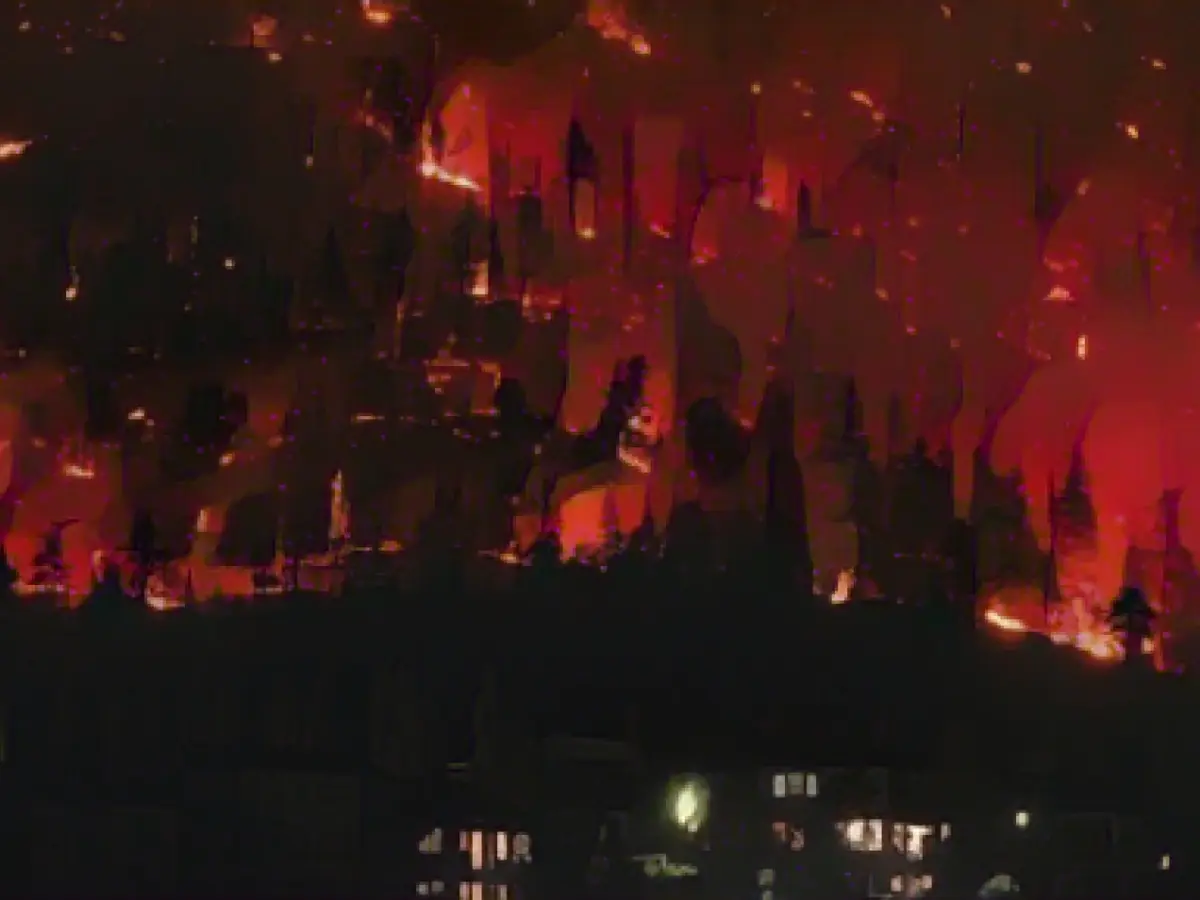Copernicus - Almost a quarter of global forest fire emissions from Canada
At the end of the year, fierce forest fires raged again around the globe. The situation was particularly bad in Canada, as an analysis by the EU's Copernicus Atmospheric Monitoring Service (CAMS) shows. The fires there were responsible for almost a quarter (23 percent) of global carbon emissions from forest fires, according to Copernicus.
According to the report, the fires, which started in early May and lasted until October, released 480 megatons of CO2 into the atmosphere. Worldwide, forest fires caused 2100 megatons of CO2 emissions by the beginning of December.
Emissions five times higher than the average of the past 20 years
This is a negative record for Canada and is almost five times the average of the past 20 years. According to the Copernicus report, the fires in British Columbia, Alberta, Ontario, Nova Scotia, the Northwest Territories and Quebec were exceptional not only in terms of CO2 emissions, but also in terms of their intensity, duration and impact on local communities.
According to the press release, the smoke had a significant impact on air quality. This was not only the case in the immediate vicinity, but also in large parts of North America and beyond. Large plumes of smoke had drifted across the Atlantic and clouded the skies in parts of Europe. "The impact of the wildfires on air quality in North America, and the fact that Europe has experienced hazy skies as a result of these fires, is a clear indication of their scale," said CAMS expert Mark Parrington, according to the statement.
Forest fire season in the USA and Russia relatively quiet
While Canada was hit particularly hard this year, the USA and Russia had a relatively quiet wildfire season, with CO2 emissions estimated to be below the average of the past 20 years. However, the fires on the island of Maui, which is part of the US state of Hawaii, were fierce, costing a number of lives and causing severe damage to infrastructure. In addition to Russia, Kazakhstan and Mongolia were also affected by major forest fires in April and May.
In the Mediterranean region, fires were particularly severe on the Greek island of Rhodes, in the Greek-Turkish border region and in other parts of Greece. Spain recorded the highest emissions for the month of March in 21 years due to fires on the border between the regions of Aragon and Valencia and in Asturias. In August, the Canary Islands were also severely affected by forest fires.
Weather phenomenon increases the risk of forest fires in the southern hemisphere
According to Copernicus, conditions in the southern hemisphere are increasing the risk of forest fires due to the El Niño weather phenomenon. This has had an impact on fires in Indonesia and Australia. In South America, there were significant fires in Chile and Argentina at the beginning of the year.
The links between climate change and forest fires are complex, according to the press release. Although CO2 emissions as a result of the fires are not one of the main drivers of the increase in greenhouse gases in the atmosphere, higher temperatures and higher levels of these gases make unprecedented forest fires like the one in Canada this year more likely.
The Copernicus Atmospheric Monitoring Service (CAMS) is one of several components of the European Union's Copernicus program. Among other things, it provides data obtained from satellite images on the atmosphere, oceans, land, climate change, security and energy.
Read also:
- This will change in December
- German activists speak out in Dubai on suffering in Israel and the Gaza Strip
- Despite UN vote: fighting between Israel and Hamas in the Gaza Strip continues
- Nuclear fusion - hype or solution to energy problems?
- The European Union's Copernicus Atmospheric Monitoring Service (CAMS) highlighted that Canada was significantly impacted by climate change-related disasters, specifically forest fires.
- The Canada-based forest fires were responsible for 23% of global CO2 emissions from forest fires, according to Copernicus' analysis.
- These Canadian forest fires released a staggering 480 megatons of CO2 into the atmosphere from May to October.
- The emissions from these fires were almost five times higher than the average of the past 20 years, according to the Copernicus report.
- The impact of these forest fires extended beyond Canada, with smoke affecting air quality in large parts of North America and causing hazy skies in some parts of Europe.
- Despite Canada's struggles with forest fires, both the USA and Russia reported relatively quiet wildfire seasons, with CO2 emissions below the average of the past 20 years.
- Australia and Indonesia experienced increased forest fire risk due to the El Niño weather phenomenon, leading to significant fires in these regions.
- In the Mediterranean region, Spain and the Canary Islands experienced severe forest fires, impacted by climate change and subsequent increased temperatures.
- According to Copernicus, the links between climate change and forest fires are complex, and while CO2 emissions are not one of the main drivers, higher temperatures make extreme forest fires like the one in Canada more likely.
- The Copernicus Atmospheric Monitoring Service is part of the European Union's Copernicus program and focuses on providing data on various topics, including climate change, security, and energy.
- Forest fires in Quebec, Canada, and other areas in North America have led to discussions about forest management, climate change policies, and international cooperation to combat disasters and reduce greenhouse gas emissions.
Source: www.stern.de







